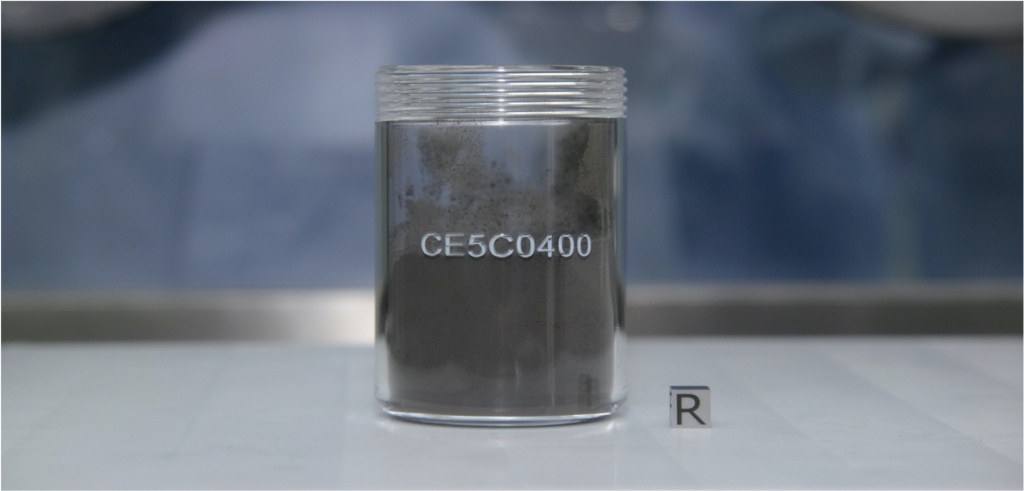Scientists have begun studying the samples returned from the Moon by China’s Chang’e-5 mission in December 2020, and a group of researchers presented their first findings at the Europlanet Science Congress (EPSC) last week.
“The Chang’e-5 samples are very diverse, and includes both local and exotic materials, including some glutenates [sharp, jagged lunar particles], silicas, salts, volcanic glasses, and impact glasses, along with different minerals and different rock types,” said Yuqi Qian, a PhD student at the China University of Geosciences, during his presentation at the EPSC virtual meeting.

Chang’e-5 landed on the near side of the Moon in the Oceanus Procellarum, or Ocean of Storms, which is located on the western, central part of the Moon from our vantage point on Earth. It landed in an area not visited by the NASA Apollo or the Soviet Luna missions nearly 50 years ago. This area is also one of the youngest lunar surfaces, with an age of about 2 billion years old, and therefore these samples are different to those returned in the 1960s and 70s.
“The samples are very diverse, as we have known for a very long time that the formation of the lunar surface is a very complex process, including solar wind implantation, micrometeorite impacts, and condensation,” Qian said.
The “local” materials, which make up about 90 per cent of the returned samples, include young mare basalts, and local impact ejecta. The “exotic” materials, i.e., materials not native to the region, make up about 10 per cent of the Chang’e-5 samples and include distant impact ejecta, meteoritical materials, and volcanic glass beads.
The Chang’e-5 lunar lander retrieved about 1.7 kilograms (3.81 pounds) of samples from the Moon. It used a drill to gather samples from the subsurface and robotic arm for surface samples. The Chang’e-5 sample return capsule landed in China’s Inner Mongolia region on December 16, 2020, successfully capping a 23-day odyssey that brought back the first lunar rocks since 1976.
Qian and colleagues from Brown University and the University of Münster have looked at the potential sources of the glass beads, and have traced these rapidly cooled glassy droplets to now-extinct volcanic vents known as ‘Rima Mairan’ and ‘Rima Sharp’ located roughly 230 and 160 kilometers southeast and northeast of the Chang’e-5 landing site. These fragments could give insights into past episodes of energetic, fountain-like volcanic activity on the Moon.
The team also looked at the potential sources of impact-related fragments. The young geological age of the rocks at the landing site narrows the search, as only craters with ages less than 2 billion years can be responsible, and these are relatively rare on the lunar near-side.

The team modeled what craters could be responsible for the exotic materials and found that some materials could have been ejected from as far as 1,300 km away from the Chang’e-5 landing site. They found that Harpalus, located farther north of Chang’e-5’s site, is a significant contributor of many exotic fragments among the samples, along with craters to the south and southeast (Aristarchus, Kepler, and Copernicus), and northwest (Harding).
Modelling and review of work by other teams has linked other exotic pieces of rock to domes rich in silica or to highland terrains that surround the landing site.
“All of the local and exotic materials among the returned samples of Chang’e-5 can be used to answer a number of further scientific questions,” said Qian, in a press release. “In addressing these we shall deepen our understanding of the Moon’s history and help prepare for further lunar exploration.”
You can read the team’s findings here.
Lead image caption: Image of the Chang’e-5 sample “CE5C0400” from the Moon’s surface. This fraction of lunar materials returned to Earth by Chang’e-5 weighs nearly 35 grams and was collected by a robotic arm. Credit: CNSA (China National Space Administration) / CLEP (China Lunar Exploration Program) / GRAS (Ground Research Application System).

